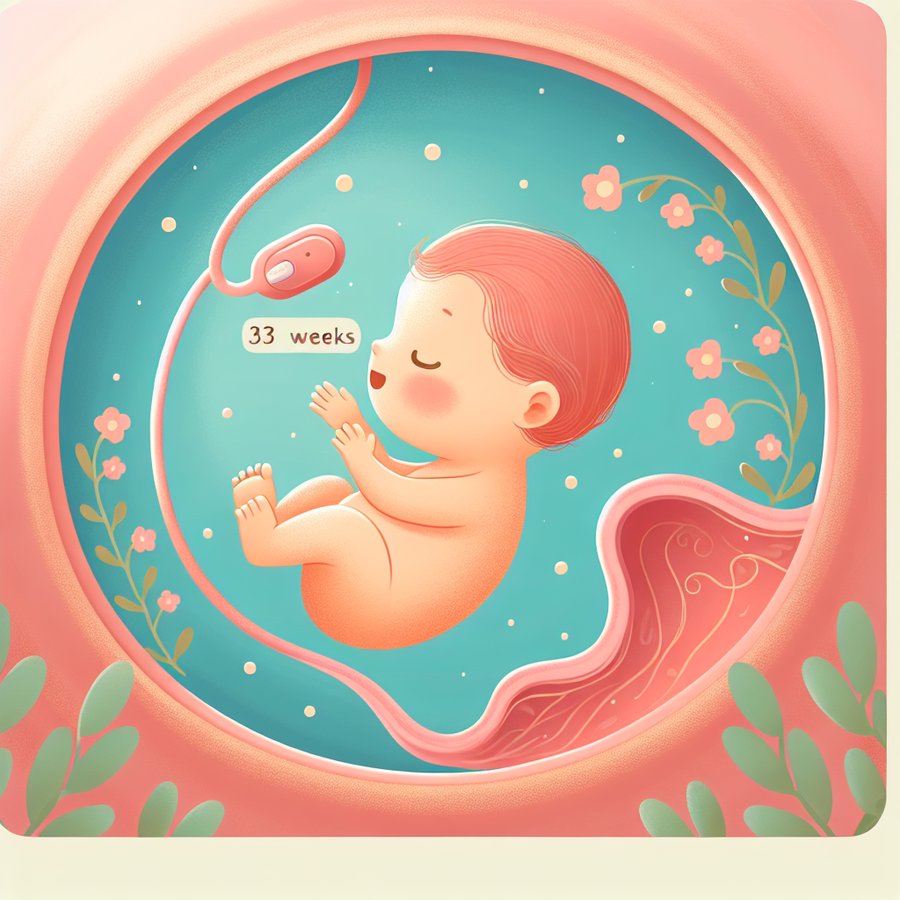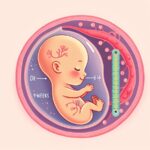Baby’s growth and development at week 33 is a journey filled with awe and anticipation for expectant parents. As you inch closer to the grand arrival, understanding the nuances of this critical phase can provide both reassurance and excitement. This comprehensive guide delves deep into the fetal milestones, body changes for the mom-to-be, and essential tips for nurturing a healthy environment for your little one.
Baby’s Growth and Development at Week 33?
At week 33, your baby’s development is in full swing. The baby is now roughly the size of a pineapple, measuring about 17 inches in length and weighing approximately 4 pounds. This period marks significant progress in the maturation of the baby’s lungs and brain. The bones are hardening, except for the skull which remains soft and pliable to facilitate childbirth. The baby’s movements may become less vigorous as space in the uterus becomes tighter, yet these movements are essential indicators of well-being.
During this week, the baby’s eyes can detect light and close eyelids during sleep, demonstrating a sleep-wake cycle. Amniotic fluid starts to decrease as the baby grows larger, but it still plays a crucial role in protecting and supporting the baby’s development. It’s a time of rapid growth and maturation as the baby prepares for life outside the womb.
Health Check-ups and Preparations at Week 33
As you navigate through baby’s growth and development at week 33, regular prenatal check-ups become increasingly important. These appointments allow healthcare providers to monitor the baby’s health, track growth, and detect any potential issues early. Expectant mothers may undergo testing for Group B Streptococcus (GBS) around this time, a common bacteria that can be harmful to the newborn if not treated.
It’s also a great time to discuss birth plans with your healthcare provider. Whether it’s choosing a natural birth, exploring pain relief options, or planning a cesarean section, making informed decisions is crucial. Additionally, consider taking a tour of the birthing facility to familiarize yourself with the environment and services available.
Nurturing a Healthy Environment for Baby’s Development
Supporting baby’s growth and development at week 33 extends beyond medical check-ups. Nutritional intake, mental well-being, and physical activity play pivotal roles. A balanced diet rich in iron, calcium, and omega-3 fatty acids supports fetal development and prepares the body for childbirth. Staying hydrated is equally important to maintain amniotic fluid levels and enhance maternal health.
Mental well-being during pregnancy cannot be overstated. Stress and anxiety can affect fetal development, making it essential for expectant mothers to find relaxation techniques that work for them. Gentle exercise, prenatal yoga, and meditation can be beneficial. Engaging in activities that bring joy and peace contributes to a positive prenatal environment.
Final Thoughts on Baby’s Growth and Development
Understanding baby’s growth and development at week 33 provides a glimpse into the incredible journey of bringing a new life into the world. This period is crucial for both the baby’s physical maturation and the emotional preparation of expectant parents. Embrace this time by nurturing your health, seeking support, and envisioning the beautiful moment when you finally meet your baby.
Remember, every pregnancy is unique, and while milestones provide a general guide, individual experiences may vary. The key is to stay informed, connected with your healthcare provider, and attuned to your body’s signals. As you look forward to the weeks ahead, take comfort in knowing that you are providing a loving and nurturing environment for your baby’s growth and development.
For more insights on pregnancy and baby care, explore our resources on baby’s growth and development at week 33 and beyond. Whether you’re curious about nutritional tips, exercise recommendations, or emotional support strategies, our comprehensive guides are here to assist you every step of the way.













